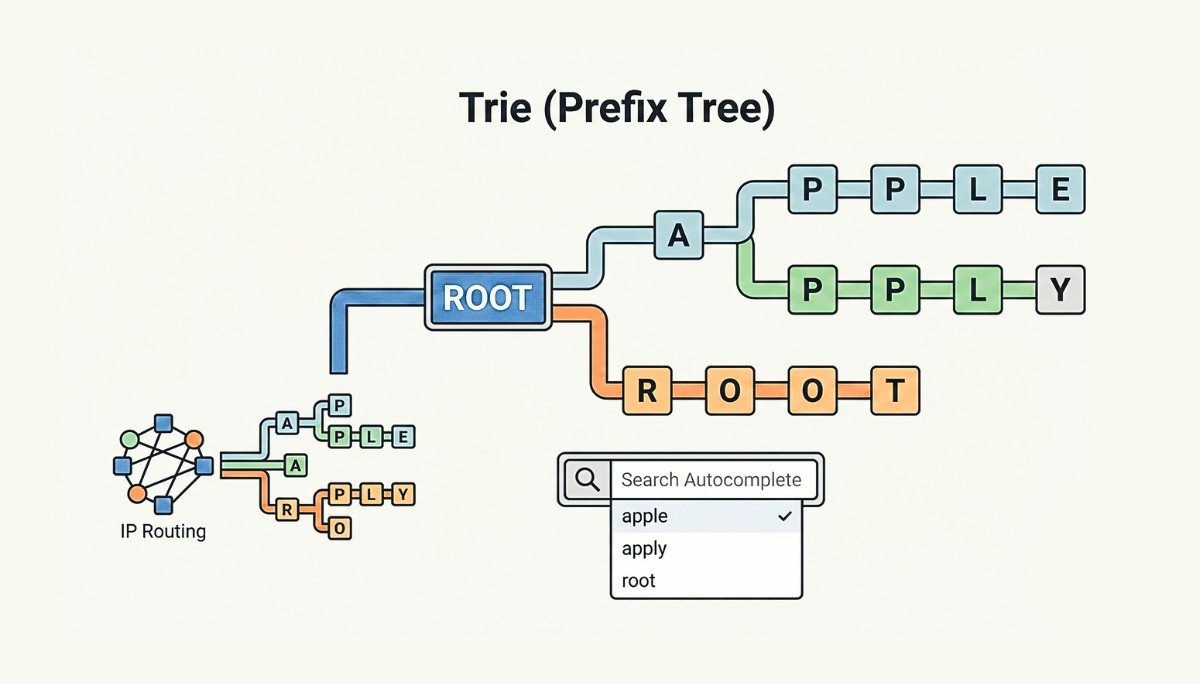Cloud Computing, Virtualization, Edge Computing & How It All Connects
By
Samantha Cox
•
Aug 5, 2025
Virtualization in cloud computing allows multiple virtual machines to run on one physical server. This optimizes hardware use and reduces costs. It’s the key technology behind efficient and scalable cloud services. Read on to learn how it works, its benefits, and the types of virtualization in cloud computing.
Key Takeaways
Virtualization in cloud computing allows multiple virtual machines to operate on a single physical server, enhancing resource utilization and providing operational flexibility.
The primary types of virtualization, server, network, and storage, each serve unique purposes, improving efficiency and management in cloud environments.
While virtualization offers significant benefits such as cost reduction and improved disaster recovery, it also poses security challenges that require effective management and robust access control measures.
What is Virtualization in Cloud Computing?

Virtualization technology enables the creation of virtual representations of physical resources like servers, allowing multiple virtual machines to operate on a single physical machine. This abstraction of physical hardware provides unparalleled flexibility in managing and using computing power and computing resources.
Each virtual machine operates independently from the others, each with its own operating system and applications. This independence enhances operational efficiency, allowing businesses to run diverse workloads on the same hardware without interference. The key to this functionality is the hypervisor, a software layer that manages multiple virtual machines and allocates physical resources to them.
One of the most significant advantages of virtualization is the maximization of hardware utilization. By running multiple virtual environments on a single physical machine, businesses can reduce the need for extensive physical infrastructure, leading to substantial cost savings. This efficiency is particularly beneficial for cloud service providers, who can offer more competitive services by optimizing their hardware resources.
In the context of cloud computing, virtualization is the backbone that supports the dynamic allocation of computing resources. It enables cloud providers to offer scalable, flexible, and cost-effective cloud computing services, ranging from infrastructure as a service (IaaS) to platform as a service (PaaS) and software as a service (SaaS). This foundational technology has paved the way for the diverse and robust cloud environments we rely on today.
How Virtualization Works
At the heart of virtualization is the hypervisor, a critical component that allows multiple virtual machines to run on a single physical server. The hypervisor can be categorized into two types: Type 1 and Type 2. Type 1 hypervisors, also known as bare-metal hypervisors, run directly on the hardware, providing superior performance and efficiency. In contrast, Type 2 hypervisors operate atop an existing operating system, offering ease of use but at the cost of some performance overhead.
Virtual machines created by the hypervisor can run different operating systems from the host system. This capability provides flexibility for diverse application needs, allowing businesses to deploy various software environments on the same physical hardware. The hypervisor ensures that each virtual machine operates independently, so the performance of one does not affect the others.
A practical example of this independence is seen in the hybrid cloud model, where businesses hybrid cloud combine public and private cloud resources to achieve greater flexibility and scalability. By leveraging virtualization, organizations can seamlessly move workloads between on-premises data centers and public cloud environments, optimizing resource utilization and ensuring business continuity in hybrid clouds.
Types of Virtualization in Cloud Computing
Virtualization in cloud computing encompasses various types of cloud computing, each serving unique purposes for resource management. The primary types include server virtualization, network virtualization, and storage virtualization. These types of virtualization abstract physical resources to create virtual environments, enhancing flexibility and resource management.
Server virtualization transforms a single physical server into multiple virtual servers, each capable of running its own operating system and applications. This type of virtualization is fundamental in cloud computing, enabling efficient resource utilization and cost savings with remote servers.
Network virtualization abstracts physical network resources to create virtual networks that can operate independently over the same physical infrastructure. This approach facilitates better resource management and scalability, making it ideal for dynamic cloud environments.
Storage virtualization consolidates physical storage from multiple devices into a single logical storage unit. This consolidation simplifies management and improves performance, making it easier to handle large volumes of data in cloud environments.
Server Virtualization
Server virtualization enables a single physical server to operate multiple virtual servers, each with its own operating system and applications. By dividing a physical server into several isolated virtual servers, organizations can optimize resource utilization and reduce the need for additional hardware.
This type of cloud computing virtualization is particularly beneficial for cloud computing services, as it allows cloud providers to offer flexible and scalable infrastructure solutions. For instance, businesses can leverage public cloud services to deploy and manage virtual servers without investing in physical data centers. This approach not only reduces costs but also enhances operational efficiency by adopting cloud computing architecture, allowing quick cloud deployment and scalable resource allocation.
Examples of server virtualization in action include platforms like Microsoft Azure and Google Cloud, which offer infrastructure as a service (IaaS) solutions. These cloud computing platforms enable users to create and manage virtual servers, providing a robust foundation for cloud applications and infrastructure services.
Network Virtualization
Network virtualization abstracts physical network resources, allowing for flexible and scalable networking solutions. This type of virtualization creates virtual networks that operate independently over the same physical network infrastructure, facilitating better resource management and scalability.
Combining multiple physical networks into a single logical network, network virtualization simplifies resource management. This abstraction allows organizations to manage multiple network devices as a single virtual network, enhancing efficiency and reducing complexity.
In cloud computing, network virtualization is crucial for supporting hybrid cloud strategies. It enables businesses to seamlessly integrate private and public cloud environments, ensuring secure and efficient data transfer between different cloud platforms while maintaining cloud security. This flexibility is essential for maintaining business continuity and optimizing resource utilization in dynamic cloud environments.
Storage Virtualization
Storage virtualization consolidates physical storage from multiple devices into a single logical storage unit, simplifying management and improving performance. By merging storage resources from multiple devices, organizations can create a unified storage system that enhances efficiency and resource management.
This type of virtualization is particularly beneficial for data storage in data storage cloud computing environments. It allows for the aggregation of storage resources, making it easier to manage large volumes of data and ensuring high availability and reliability. For instance, in hybrid cloud models, storage virtualization enables seamless data transfer between on-premises and cloud storage, facilitating disaster recovery and business continuity.
Examples of storage virtualization tools include VMware vSAN and Microsoft Storage Spaces Direct. These solutions provide robust storage management capabilities, enabling businesses to optimize their storage infrastructure and improve overall system performance.
Benefits of Virtualization in Cloud Computing

Virtualization offers numerous benefits of cloud computing, starting with optimized resource utilization and cost reduction. By enabling multiple virtual servers to run on a single physical server, organizations can maximize hardware usage and reduce the need for additional infrastructure.
One of the most significant advantages of virtualization is its flexibility and scalability. Organizations can quickly deploy or relocate virtual machines as needed, allowing for rapid response to changing business demands. This flexibility is particularly beneficial for developers, who can create and deploy multiple virtual machines for testing purposes, accelerating development cycles.
Another key benefit is improved disaster recovery. Virtualization enables the rapid deployment of backup virtual machines in case of hardware failures, ensuring business continuity and minimizing downtime. Additionally, virtualized environments allow for better workload balancing, improving overall system performance and availability.
Centralized management of virtual resources also enhances IT productivity and efficiency. By reducing the time spent on maintenance tasks, IT teams can focus on strategic initiatives that drive business growth. These benefits make virtualization a cornerstone of modern cloud computing architectures, supporting the dynamic and scalable nature of cloud services.
Virtualization Technologies and Tools
Several technologies and tools are pivotal in implementing virtualization in cloud computing environments. VMware vSphere, for instance, is a comprehensive virtualization platform that includes the ESXi hypervisor, enabling centralized management of multiple virtual machines.
Microsoft Hyper-V is another popular option, designed for managing Windows workloads. It offers features like PowerShell integration for automation, making it a robust choice for enterprises relying on Microsoft technologies.
For those seeking open-source solutions, KVM (Kernel-based Virtual Machine) is integrated with the Linux kernel and is well-suited for virtualizing Linux workloads. Proxmox VE combines virtualization and containerization, utilizing KVM and LXC technologies to provide effective resource management.
Another noteworthy mention is Xen, a powerful open-source Type 1 hypervisor that focuses on security and resource pooling, making it ideal for cloud and hosting environments.
Virtualization and Cloud Service Models
Virtualization is intricately linked with the three primary cloud service models: Infrastructure as a Service (IaaS), Platform as a Service (PaaS), and Software as a Service (SaaS). These models, recognized by the National Institute of Standards and Technology, each built on virtualization to offer distinct levels of service and flexibility.
IaaS provides on-demand access to computing resources, including servers, networking, and storage. Users can start, stop, access rented computing services, and configure their virtual machines and storage as needed, making IaaS a highly flexible solution for various business needs, including rented computing services.
PaaS, on the other hand, offers a comprehensive set of hardware and software tools for software development and cloud application development on a cloud platform. It simplifies the development and deployment of applications by providing a ready-to-use environment, including development tools, databases, and operating systems.
SaaS delivers ready-to-use software applications hosted on cloud infrastructure, managed and maintained by the cloud service provider. Users can access these applications via the internet without worrying about underlying infrastructure management, enabling self service provisioning through cloud based services.
Virtualization underpins all these cloud computing service models, enabling multiple cloud providers and cloud vendors to offer scalable, efficient, and cost-effective services in a cloud environment while managing cloud computing costs and utilizing various cloud deployment models. The cloud computing service model enhances this flexibility, showcasing the benefits of the cloud computing model.
Security Implications of Virtualization
While virtualization offers numerous benefits, it also introduces security challenges that must be addressed to protect sensitive data. Virtual machines are vulnerable to threats such as malware and ransomware, necessitating robust security measures and user education to mitigate risks.
One significant challenge is VM sprawl, where the uncontrolled increase in the number of virtual machines can lead to vulnerabilities and breaches of sensitive data. Proper segmentation and isolation of VMs help limit the spread of threats within the virtual environment, enhancing overall security. Additionally, the hypervisor, which manages the virtual machines, can become a central vulnerability if not adequately secured, impacting the entire virtual infrastructure.
Effective access control measures are essential to prevent unauthorized access to the virtual infrastructure. Organizations should:
Enforce encryption for offline VM images to protect data integrity and confidentiality.
Maintain updated hypervisors.
Implement strong monitoring and auditing mechanisms to detect and mitigate security threats.
Virtualization Challenges and Solutions
Despite its advantages, virtualization in cloud computing presents several challenges that organizations need to address for effective implementation. One common issue is resource distribution, where virtualization partitions systems in a way that can lead to inadequate scalable resources availability for some virtual machines.
VM sprawl is another challenge, wherein too many virtual machines are created, draining resources and negatively impacting system performance. To combat this, organizations must:
Implement effective VM management practices
Utilize performance monitoring tools designed for virtualized environments
Carefully manage virtual assets to ensure compliance with software licensing, especially when exceeding the number of licensed virtual machines
Addressing these challenges requires a strategic approach, including regular audits, implementing robust resource management practices, and ensuring compliance with licensing agreements. By tackling these issues, organizations can fully leverage the benefits of virtualization while maintaining optimal performance and security and compliance capabilities.
Use Cases of Virtualization in Cloud Computing

Virtualization has a wide range of use cases in cloud computing, significantly enhancing operational efficiency and flexibility. One of the most prominent use cases is disaster recovery. Virtualization facilitates faster disaster recovery processes by enabling quicker access to IT resources compared to traditional physical setups.
Development and testing environments benefit greatly from virtualization in the following ways:
Multiple virtual machines deployed with platforms like OpenStack can be used for a variety of use cases.
Developers can test new applications and updates in isolated environments without impacting production systems.
This capability accelerates development cycles.
It enhances software quality.
Additionally, virtualization supports dynamic workload management and scalability. Seamless migration of virtual machines between different cloud environments allows organizations to optimize resource utilization and ensure business continuity. These use cases demonstrate the versatility and effectiveness of cloud migration in modern cloud computing architectures.
Future Trends in Virtualization
As technology continues to evolve, several future trends are expected to shape the landscape of virtualization. One significant trend is the increased adoption of artificial intelligence (AI) in virtualization. AI is expected to enhance automation and improve resource management, leading to more efficient and intelligent virtualized environments.
The rise of edge computing is another trend that is transforming virtualization strategies. Edge computing involves processing data closer to the data source, reducing latency and bandwidth usage. This shift requires virtualization to support decentralized data processing, enabling more responsive and efficient edge computing solutions.
Virtualization is also set to play a critical role in supporting 5G technology. Virtualization will help deliver the high-speed, low-latency performance required for 5G applications through efficient resource allocation and management. These trends highlight the ongoing innovation in virtualization, promising even greater capabilities and efficiencies in the future.
Summary
Virtualization has revolutionized cloud computing, providing the foundation for scalable, flexible, and cost-effective cloud services. By abstracting physical resources, virtualization enables multiple virtual environments to run on a single physical server, optimizing resource utilization and reducing hardware costs. This technology supports various cloud service models, including IaaS, PaaS, and SaaS, each offering unique benefits and capabilities.
The benefits of virtualization are manifold, from improved disaster recovery and faster development cycles to enhanced system performance and centralized management. However, it also presents challenges such as security vulnerabilities and resource distribution issues, which require strategic management and robust security measures.
Looking ahead, the future of virtualization is bright, with trends like AI, edge computing, and 5G set to enhance its capabilities further. As organizations continue to adopt and innovate in virtualization, the potential for even greater efficiencies and advancements in cloud computing remains vast and exciting.




